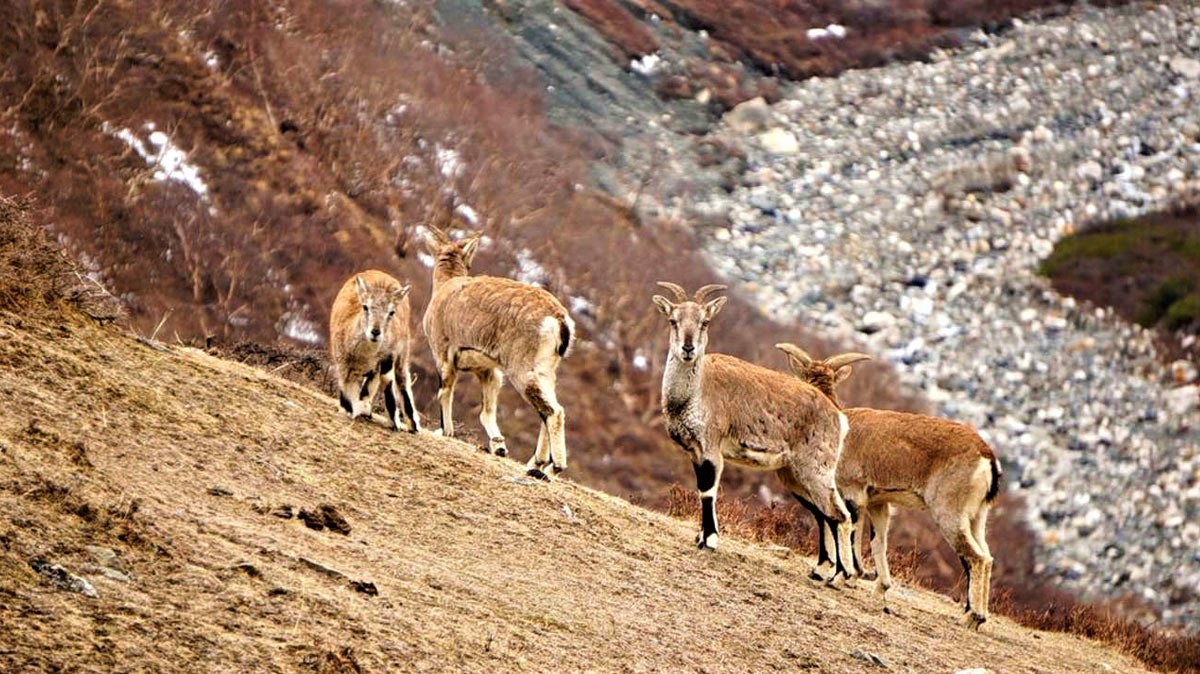Interesting things about Dhorpatan Hunting Reserve | All you need to know about Dhorpatan Hunting Reserve
Dhorpatan Hunting Reserve is a protected area located in western Nepal. Dhorpatan Hunting Reserve is situated in the Dhaulagiri Himalayan range, covering parts of Rukum, Myagdi, and Baglung districts in western Nepal. The hunting reserve spans an area of approximately 1,325 square kilometers (511 square miles). The reserve was established in 1987 with the primary objective of preserving and managing the wildlife and their habitats. It is the only hunting reserve in Nepal. Here's everything you need to know about it:
1. Wildlife:
Dhorpatan Hunting Reserve boasts a diverse range of wildlife species. The endangered Himalayan musk deer is one of the most prominent species found in the reserve. These deer are known for their musk glands, which are highly valued in traditional medicine and perfume production. The blue sheep, also known as Bharal, is another significant species found in the reserve. These wild sheep are well-adapted to the rugged terrain and can be seen grazing on steep slopes. Other notable wildlife includes the elusive leopard, Himalayan tahr (a type of wild goat), ghoral (a type of wild goat-antelope), serow (a goat-antelope species), Himalayan black bear, and a variety of bird species.
2. Hunting Regulations:
The hunting activities in Dhorpatan Hunting Reserve are tightly regulated to ensure sustainable and responsible hunting practices. The Department of National Parks and Wildlife Conservation oversees the issuance of hunting permits based on quotas and species availability. The quotas are determined by the population dynamics and conservation status of each species. Hunting permits specify the number and type of animals that can be hunted. It is essential for hunters to comply with these regulations and obtain the necessary permits before engaging in any hunting activities within the reserve.
3. Conservation Efforts:
While hunting is allowed in the reserve, it is conducted with a strong emphasis on conservation. The revenue generated from hunting permits is used for various conservation initiatives, including anti-poaching efforts, habitat preservation, and community development projects. These efforts contribute to the overall conservation of wildlife populations and their habitats in the region.
4. Tourism Opportunities:
Dhorpatan Hunting Reserve offers a range of non-consumptive wildlife tourism activities. Nature enthusiasts can engage in activities like birdwatching, nature walks, and wildlife photography to appreciate the reserve's natural beauty. The diverse landscape and abundant wildlife provide ample opportunities for visitors to explore and immerse themselves in the wilderness.
5. Local Communities:
The local communities residing in and around the hunting reserve play a crucial role in conservation efforts. Indigenous groups such as the Magar, Gurung, and Thakali have a deep understanding of the local wildlife and ecosystems. They actively participate in conservation initiatives, wildlife monitoring, and ecotourism activities. Engaging with these communities can provide visitors with insights into the local culture and traditions while contributing to the sustainable development of the region.
6. Access and Trekking:
Dhorpatan Hunting Reserve can be accessed by road from Kathmandu, with the journey taking around 10-12 hours. The nearest airports are located in Pokhara and Jumla, from where one can continue their journey by road or embark on trekking expeditions to reach the reserve. Trekking routes vary in duration and difficulty, offering opportunities for adventurers to explore the picturesque landscapes and encounter wildlife along the way.




.jpg)



